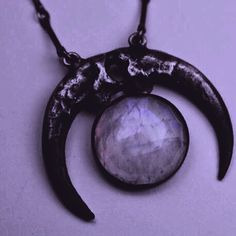Don't wanna be here? Send us removal request.
Text

VEILING
Veiling is a practice with both ancient and modern roots. While veiling was not universally practiced by all ancient Greeks, it held symbolic and practical significance in certain contexts, particularly in relation to specific Gods, rituals, and social customs.
As someone who practices veiling more often than not, I wanted to discuss the history behind it as pertaining to the religion, and show you some examples of different veils you can use.
Historical Veiling in Ancient Greece
In ancient Greece, veiling was not just religious but was linked to societal norms regarding gender, respect, and propriety. It was common for women to veil their heads when outside the home, though men could veil as well.
Veiling also had a ritual function in religious ceremonies. Priestesses often veiled during rituals or temple service as a sign of reverence and purity when approaching the Gods. In some festivals, such as those dedicated to Demeter or Hestia, veiling was particularly significant, reflecting the Goddesses’ connection to the home, modesty, and fertility.
In modern times, we can veil during rituals or daily life as a way to express reverence for the Gods, especially when in prayer.
The reasons for veiling vary among practitioners and may include:
1. Honoring Tradition: Veiling can be used as a way of honoring ancient customs, particularly when engaging in things regarding Hestia, Demeter, or Persephone.
2. Ritual Purity: Veiling can be used as a means of maintaining ritual purity, particularly when one wishes to separate the mundane from the sacred.
3. Modesty and Respect: Veiling can also reflect a personal choice to express modesty or respect, particularly in the presence of deities or during rituals dedicated to chthonic Gods.
Different Forms of Veiling in Modern Practice
Full Veil (Himation-style): The veil covers the head and sometimes drapes over the shoulders.

Partial Veiling: This veil covers just the top of the head or wearing a scarf. This can be a less formal or everyday expression of devotion, often used in daily prayers or minor rituals.

Face Veiling: In some instances, particularly in rituals involving the chthonic deities, one may veil their faces in addition to their heads. Sometimes known as Tegidion, This is done to show humility or to protect oneself spiritually when interacting with Gods associated with death or the afterlife, like Hades or Persephone.


God-Specific Veiling
Veiling can be done as a specific act of devotion to certain Gods. For example:
- Hestia (Goddess of the hearth)
- Demeter and Persephone (Goddesses of agriculture and the underworld)
- Hekate (Goddess of witchcraft, crossroads, and the underworld)
As always, I can discuss this more in depth if anyone would like :)
341 notes
·
View notes
Text
Greek Pagan Basics: How to Write a Prayer
When it comes to prayer, there aren’t a lot of rules. Prayer can be as simple, direct and informal as talking to the gods, off the cuff, in a time of need or just because you feel like it. Prayer can also be something you plan and prepare for, whether by making use of the many existing historical or modern prayers to the gods and reading or memorizing them, or by writing your own modern prayers.
You do not have to write your own prayers–it is not a requirement of worshipping the gods. But if you feel called to do it, it can be a wonderful and meaningful way to connect with deity. And while the act of prayer is not an offering, the work you put into creating it can itself be a gift to the gods.
The idea of writing your own prayers to the gods can be intimidating. You look at the readily available surviving texts, the Homeric Hymns, the Orphic Hymns, and they are so beautiful. If that’s the standard, how can we ever attain it?
But it isn’t the standard. It never was. Not all historical hymns were the Homeric hymns. Not all hymns were high art. (And certainly not all prayers were hymns, although the two terms have a lot of overlap in meaning. I usually use the term “prayer” to refer to my own writings, in part because it feels more like I’m focusing on function.)
The Homeric hymns and similar pieces were often performed at festivals and in competitions. The beauty of these hymns, while not separate from their religious significance, is not solely related to their liturgical function. Many of the hymns actually used in ritual were more to the point–more focused on that function. Few of these works survive, and those that do are of widely varying literary quality. (I personally, as a writer of my own prayers, find this idea quite comforting. :))
The Rhetoric of Prayer
I will admit it, I write a lot of prayers of praise and prayers of thanks. I don’t often pray for something and if I do it’s usually pretty informal. (I suspect that says at least as much about my life as it does about my theology.) But many of the same techniques can be used just as effectively in prayers of supplication.
Reciprocity. Like most Indo-European cultures, the ancient Greeks had a view of relationship that included “a gift for a gift.” This does not mean that you are buying friendship–rather, it emphasizes the give-and-take that is a part of any healthy relationship.
A prayer of supplication might include a reminder of past relationship, which can be either a mention of blessings the god has granted you in the past, or a mention of offerings or other services you have provided the god. It can also mention a gift being given at the same time this prayer is being made. Or it can include a promise of future gifts and services. In all cases, it is a statement of relationship.
Myth. Mythic references can refer in general to the greatness of the god, or can be used to point specifically toward the theme of the prayer. For example, a prayer to Aphrodite to bring love into your life might mention the story of Pygmalion and Galatea as an example of the goddess’ greatness. It goes without saying that these mythic references should be positive ones–you might use stories from the Iliad in a prayer praising Athena, but probably not in one for Ares.
History. Since we lack a large and thriving worship community, for concrete examples I sometimes refer back to the power and prestige a god enjoyed in the distant past. If you are asking Apollo for divinatory help, a mention of his oracular prowess at Delphi would be appropriate; if you are asking his help in health matters, the role he took at ancient healing temples would be more to the point.
Style. Historically, some sorts of prayer were believed particularly appropriate to certain gods. The dignified paean was Apollo’s, while the livelier dithyramb was for Dionysos. For a modern writer, you may want to keep in mind the rhythm of the words and metre when writing.
Voice. While a hymn or prayer of praise may be written in the third person, all the better to tell a good story, a prayer that asks for something is most often written in the second person, thus providing a direct, personal message from the writer/speaker to the god.
The Elements of Prayer
Although there is no precise and standard form that all historic prayers followed, there are a few guidelines, things that a number of prayers tended to have in common. Generally Greek prayers included three parts, each providing a different function.
Invocation. First of all, you need to get the god’s attention, and to get the interaction off on the right foot. Call to the god by name, including words of praise (pro tip, all the gods are beautiful, all the gods are mighty :)) and by the use of descriptive words and phrases. Referring to Asklepios as “son of Apollo” underlines the sort of healing power he comes from. Referring to Apollo as “swift-shooting” has a different meaning than referring to him as “sweet-singing,” although both emphasize his power and skill.
Note that there is nothing wrong with using an epithet you’ve seen in historical texts, “ox-eyed Hera” and “thundering Zeus” were common phrases and had all the more meaning because they were known and understood by all.
Argument. Here you give reasons why the god should look favorably on your request. (See Reciprocityabove.) You can also include reasons based on something other than personal relationship–for example, asking for help in matters of love from Aphrodite, or in matters of justice from Zeus, because those are among their respective realms. This is where you make your case.
Request. Finally you ask the god to look kindly on your request, to grant you their blessings and gifts.
Example: Invocation: Grey-eyed Athena, daughter of thundering Zeus, Argument: if ever I have poured out sweet wine for you, Request: look kindly on me and grant me your wisdom.
The Act of Prayer
It was traditional to stand while praying, with arms raised toward the heavens.
If praying to a chthonic deity, it would be appropriate to kneel (placing yourself symbolically closer to their realm), or to focus your attention toward the earth in some other way.
(It is more than appropriate, by the way, to sing hymns, as was often done historically, if this is something you feel drawn to do. A performance, again, is work that is a gift to the gods.)
2K notes
·
View notes
Text









lady hecate aidonaia of the underworld , titan goddess of witchcraft , crossroads , necromancy and the moon .
443 notes
·
View notes
Text
The Phases of the Moon
Pages from my Grimoire










889 notes
·
View notes
Text
🍀🍀🍀👍🙏👍🍀🍀🍀
-Luck emoji spell for good day
22 notes
·
View notes
Text
Glow-Up: Appearance Affirmations
Hello and welcome to this post! In here I will be giving a few motivation affirmations. I hope you all enjoy and find this useful.
Masterpost > Paid Readings > Subliminal Channel
NOTE: the subliminal with these affirmations is here

I am glowing with beauty, confidence, and positivity.
My physical appearance transforms effortlessly into its best version.
I radiate health, happiness, and charm.
My skin is clear, glowing, and flawless.
My hair is shiny, strong, and full of life.
My body is toned, healthy, and beautiful.
I feel more confident and attractive every day.
My natural beauty shines brighter with each passing moment.
I am the best version of myself, inside and out.
My posture, poise, and energy exude elegance.
I effortlessly attract admiration and positive attention.
My smile is radiant and lights up every room.
I glow with self-love and confidence.
My style perfectly reflects my unique beauty and personality.
I take care of myself and it shows in my glowing appearance.
I feel energized, vibrant, and full of life.
My presence is magnetic and unforgettable.
I embody grace, beauty, and strength in all that I do.
My energy is captivating, uplifting, and inspiring to others.
I am proud of my glow-up and the incredible person I am becoming.

Tip: you can repeat as much as you want, it is all effective. What works for you works for you.
2K notes
·
View notes
Text
2025 Witches' Calendar

January 13 ● Full Moon in Cancer (Wolf Moon) January 29 ● New Moon in Aquarius February 2 ● Imbolc February 12 ● Full Moon in Leo (Snow Moon) February 27 ● New Moon in Pisces March 14 ● Full Moon in Virgo (Worm Moon) March 15-April 7 ● Mercury Retrograde March 20 ● Ostara March 29 ● New Moon in Aries April 12 ● Full Moon in Libra (Pink Moon) April 27 ● New Moon in Taurus May 1 ● Beltane May 12 ● Full Moon in Scorpio (Flower Moon) May 26 ● New Moon in Gemini June 11 ● Full Moon in Sagittarius (Strawberry Moon) June 20 ● Litha June 25 ● New Moon in Cancer July 10 ● Full Moon in Capricorn (Buck Moon) July 18-August 11 ● Mercury Retrograde July 24 ● New Moon in Leo August 1 ● Lammas August 9 ● Full Moon in Aquarius (Corn Moon) August 23 ● New Moon in Leo September 7 ● Full Moon in Pisces (Harvest Moon) September 21 ● New Moon in Virgo September 22 ● Mabon October 6 ● Full Moon in Aries (Hunter's Moon) October 21 ● New Moon in Libra October 31 ● Samhain November 5 ● Full Moon in Taurus (Beaver Moon) November 9-November 29 ● Mercury in Retrograde November 20 ● New Moon in Scorpio December 4 ● Full Moon in Gemini (Cold Moon) December 19 ● New Moon in Sagittarius December 21 ● Yule
15K notes
·
View notes